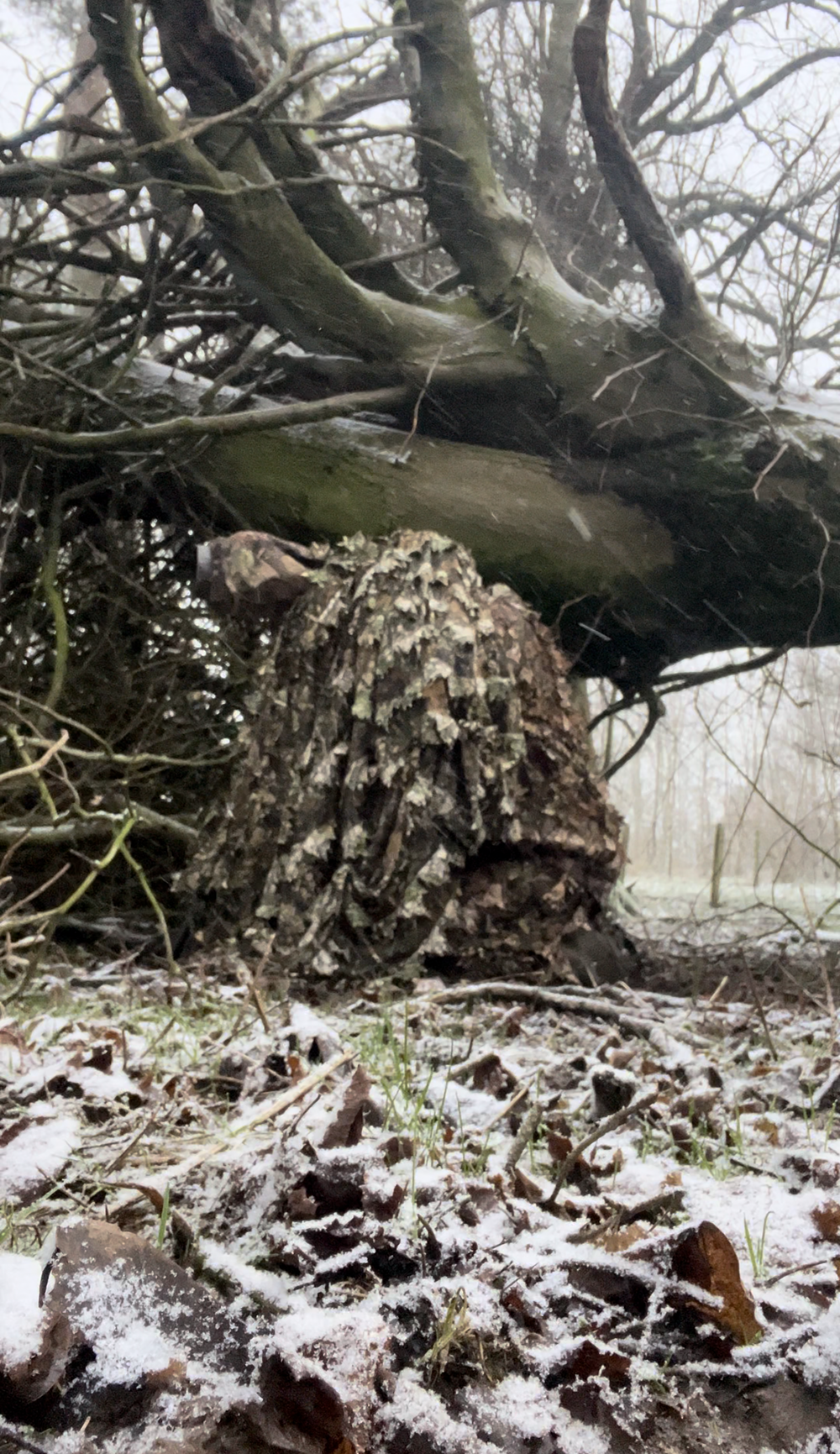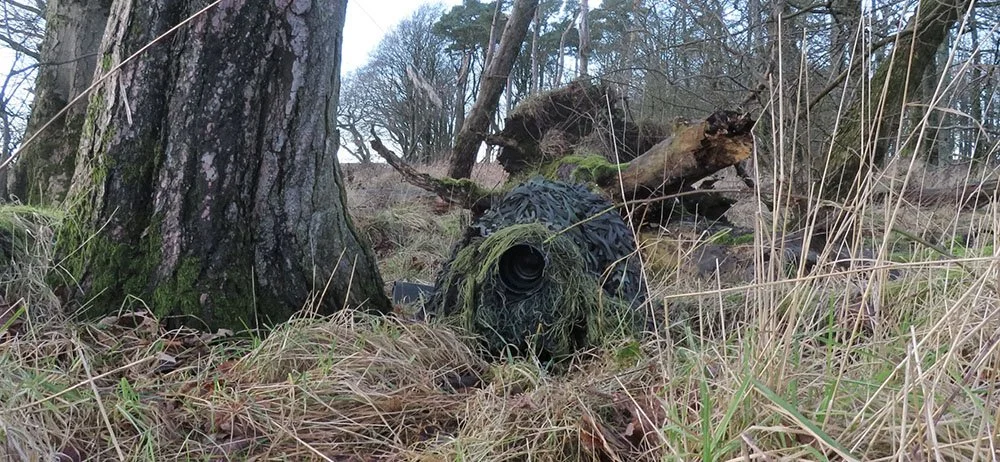Getting close to wildlife
Some tips of how I use camouflage in my wildlife photography.
3D revolution camouflage suit and blanket help to keep you inconspicuous
Being stealthy is a must, especially on wet or leafy ground, always look for high spots to stand on, move slowly using the toes of your boots to move branches or long grasses as you move forward, use the trees to hide behind and to conceal your line of sight that the animal has on you, if on your stomach crawling its best to get a view of where your moving to first then make a plan to move so you keep as quiet as possible, try moving one leg forward keeping the knee on the ground then dig your arms in and pull your body forward so that leg is straightened out again, you’ll probably get your own style as you learn to do it.
there are a few other factors to consider when tracking animals but I will go over those in a future blog.
Ghillie suit head cover is long enough to cover the camera body when using the camera sled when crawling towards the animal in sight so it won’t see your face.
laying down in the woods near a track in full body and camera camouflage.
Zoom lenses are all the rage these days with some looking like ground to air missile launchers and having to take them through wooded areas overgrown with long grasses brambles or nettles is a pain, but it doesn’t need to be like that, for me I prefer getting as close to the animal as I can without being to close, and using a lens that is of good size for the job.
As a kid I was always reading books on infantry soldiers and special forces using camouflage, it fascinated me how they used the vegetation to conceal themselves, I would go to the woods ( of which there were four big woodland plantations ) with my mates and play hide an go seek (in the days before mobile phones and internet) we would send one off to hide then the rest of us would try find the one, so we learned how to use camouflage, but the camouflage has come on leaps and bounds since the old green and brown splurges of the old army camo, now you can put on a 3d suit and stand against a tree and virtually disappear.
Ghillie and 3D suits are excellent for wildlife photography, I prefer to wear the ghillie suits during the colder months as there weight helps to keep you warm when sitting or laying down for long periods of time but I avoid using them in the rain, my heaviest suit is 2.5kg dry, I shudder to think what it would weigh if it had a downpour to deal with, but there foliage or material is long and it helps to blur the shape of the human body which is what true wildlife is hardwired to run from.
3D suits are great for keeping hidden, there very lightweight, strongly made and blend into the woods or vegetation so well, I use them most of the year but prefer to use them during warmer months as you don’t heat up as much with them compared to a ghillie suit.
gloves are also important, I know they can be a pain to work with but taking a pair and adjusting them to be more useful can be very beneficial, when wearing camo and not covering your hands it amazing how much they stand out so they need to be hidden as much as possible, its like hiviz to wildlife.
homemade camera sledge I made in my shed from old scrap steel, for low level shots it glides along rough Terrain easily when pushed in front as you crawl, the Gimbal allows the camera to be rotated and moved up or down.



